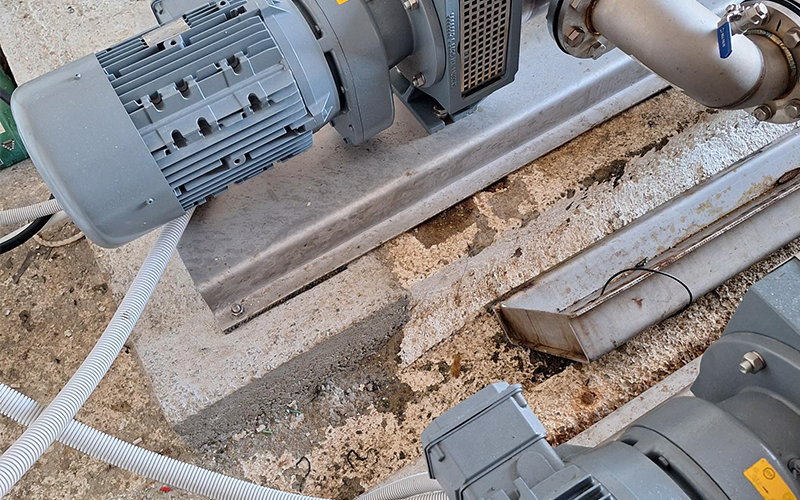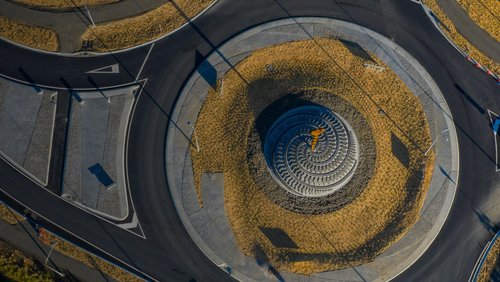29 Jul 2025
How clever engineering has helped to deliver uninterrupted, upgraded seawater supply for vital marine research.
Perched on cliffs above the sea, the University of Auckland’s Leigh Marine Laboratory has been operational since 1964. However, significant upgrades were needed to provide state-of-the-art aquariums, enabling greater research into ocean life, and the impacts of climate change, microplastics and pollution on the creatures living within it.
“The upgrade represented a fundamental shift in our infrastructure, with water management at its core,” says Boyd Taylor, Operations Manager at Leigh Marine Laboratory.
“The new network includes a sophisticated water delivery system with multiple ‘ring mains’ that now circulate ambient and temperature-controlled seawater throughout the facility.”
The brief from the University required a flexible workspace and a high degree of control over the environmental conditions. The University also needed to maintain continuous seawater flow to the existing research labs throughout construction. Many of the University’s experiments had been running for months or years and couldn’t tolerate interruptions.
“This was a once-in-a-lifetime opportunity for our mechanical engineers,” says Grant Price, Director at Heatwave, the mechanical contracting company tasked with designing and delivering the engineering for this project. Grant says while “the seawater engineers” for the project, Beca, provided the main design, Heatwave provided sub-contractor design to make the elements work within the functional brief.

Specialist seawater filtration systems with sand/gravel media, and pipework/control system for filtration, backwashing and recirculation. Photo: Heatwave
The project’s core involved pumping seawater over 20m up the cliff face, filtering it through specialised filtration systems and reticulating it to the research labs and tank farms. The team needed to replace an existing “spaghetti- like” arrangement of low-grade PVC pipes with a robust cold and tempered water system, featuring commercial- grade filters and automated backwashing capabilities.
“At the start of this, it’s fair to say we were not seawater specialists,” explains Charlie Thomas, Project Engineer at Heatwave. “Ninety percent of the work was seawater related. Ten percent was our core expertise of HVAC [heating, ventilation and air conditioning].”
Charlie says they undertook extensive research, including into the installation of similar systems in Australia.
The engineering design demanded precise calculations for polyethylene and PVC pipework, given the highly corrosive seawater environment.
“The black polyethylene pipes expand in the sunlight, so we also needed to account for that in our calculations,” says Charlie. In addition, unions or flanges were needed at 6m intervals along the pipework to allow for cleaning access. Seismic design was also included in the solution, ensuring that hangers for the pipework provided appropriate seismic restraint.
A critical engineering aspect was the redesigned filtration system, which now employs large pressure vessels with 3m by 2m media filters capable of removing particles greater than 10 microns – a significant improvement from the previous 200-micron baseline. The system features automated backwashing capabilities that eliminate manual intervention, particularly valuable during storms when clogging occurs.
“If a storm clogs up the system, it now backwashes more frequently. It senses that it needs to run a backwash cycle and flush the system out multiple times per day, rather than requiring a technician,” says Boyd.
Oskar Katai, Senior Engineer at Heatwave, led the 3D modelling, which proved crucial for fitting complex equipment onto small platforms and coordinating piping with access requirements, including maintaining a helicopter landing site.

Pipework and cabling from the seawater shore pump house at the base of the cliff. This pipework rises up the cliff, then reticulates around the perimeter of the site into the filtration and tank farm areas. Photo: Heatwave
“Being a brand new, state-of-the-art facility, there was high demand from stakeholders to have everything looking top notch,” says Oskar.
“All pipework within the lab is exposed, so we had to colour match and integrate with other services – something that just can’t be shown on 2D.”
Three shore-based pumps now work in conjunction with two land-based pumps. The system now holds over 360,000 litres of seawater in storage on site, comprising of 180,000 litres in tanks and 180,000 litres in a tank, allowing for recirculation if the primary pumps fail.
This infrastructure allows scientists to study marine organisms’ responses to various stressors with unprecedented precision.
“This greatly increases our resiliency, which is critical for our research continuity and animal welfare,” says Boyd.
The drainage system represents another engineering innovation, with separate channels for facility runoff and tank water. “We separate impurities in the recycled
seawater from the tanks. Each has dedicated drains, with tank water being filtered before returning to the marine reserve, improving environmental protection,” says Boyd.
Control systems architecture provides remote monitoring and operation via networked interfaces and mobile applications. The system includes automated alerts for condition deviations, and enables remote pump control and troubleshooting.
Heatwave’s team agree the project’s success ultimately came down to collaboration between engineers, construction managers and tradespeople with decades of experience.
“We bounced ideas off each other through conversations internally with our site and install teams, talking to builders and sub-trades to come up with the most optimal solution,” says Charlie.

Durable, high-performance stainless steel-housed shore pumps which draw water from the pristine marine reserve at Goat Island up the cliff, into the filtration and tank farm area. Photo: Heatwave
“For us, this project has been the essence and heart of engineering: problem-solving.”
“We’re immensely proud of the project,” says Grant. “We believe it’s central to the current discussions around the strength of New Zealand’s infrastructure. This is a great example of a quality infrastructure design at a leading research facility.”
Professor Conrad Pilditch, Director of the Marine Laboratory, says: “This infrastructure allows scientists to study marine organisms’ responses to various stressors with unprecedented precision.
“For its size, it’s a state-of-the-art facility, ranking as one of the most significant in New Zealand and comparable
to international standards. The engineering innovations have provided a massive shot in the arm for marine research capabilities.
This article was first published in the June 2025 issue of EG magazine.







